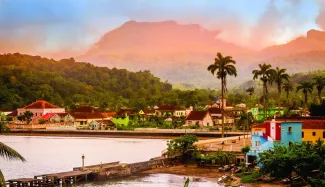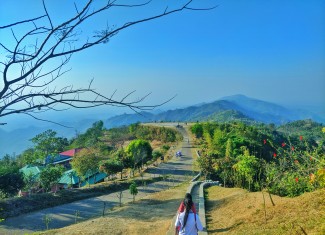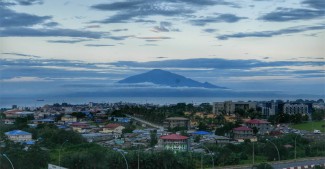|
|
|
The annual meeting of the Conference of the Parties (COP) – the highest body of the United Nations Framework Convention on Climate Change (UNFCCC) – is underway in Madrid, Spain. Least developed countries (LDCs) are actively participating in discussions and negotiations that will shape the manner in which all UNFCCC members implement their obligations to face one of the greatest challenges of our times.
At the same time, World Trade Organisation (WTO) members in Geneva, Switzerland, are grappling with several important issues confronting the multilateral trading system while keeping an eye on the next meeting of the highest body of the WTO, the ministerial conference in summer 2020. LDCs are actively participating in all the WTO discussions and negotiations as well.
However, one does not hear much about trade in the meeting halls of COP 25 in Madrid, nor of climate change in the corridors of the WTO in Geneva. The disconnect between trade and climate change communities, including LDC negotiators in the WTO and UNFCCC, is apparent and alarming.
Climate change has implications for trade and vice versa
Trade has been and remains a key element of development strategies for LDCs. Their efforts, with support from their trade and development partners, have been geared towards meaningful and beneficial integration in the multilateral trading system.
They have invested in the development and reform of their trade-related policies, and in fostering conducive approaches and agreements in the WTO. Indeed, the LDC Group in the WTO has been behind several important WTO ministerial decisions – for example those related to simplifying rules of origin for LDC exports to markets where they enjoy preferences.
But, the trade prospects and trade performance of LDCs is under serious threat from climate change. Extreme weather events, changing seasons, rising seas, to name some of the effects, cause serious disruptions to their production and trade patterns.
While agriculture often bears the brunt of these adverse impacts, no sector of their economies is immune to the vagaries of climate change. For example, industrial production suffers from interruptions in input supplies, and services sectors such as tourism may lose substantial investment and income due to one extreme weather event. Some of them are in fact facing a real existential threat from rising sea levels.
Trade too has implications for climate change. It has the potential to worsen the climate crisis by contributing to greenhouse gas emissions. It also has the potential to be part of the solution. Trade can promote sustainable production and consumption, provide capacity, resources and technology to undertake climate adaptation and mitigation measures, and frame effective rules – for example against harmful subsidies to agriculture and fisheries as well as fossil fuel subsidy reform.
Commitments undertaken by members in the climate change context cannot be fully and effectively implemented without addressing their trade implications. Similarly, trade policies and agreements cannot achieve their objective of inclusive and sustainable development without taking into account the climate change crisis.
Climate and trade communities in LDCs can be brought closer together
Yet the realms of trade and climate change negotiations remain worlds apart.
Admittedly, and particularly in the case of LDCs, one major reason is the lack of human, technical, financial and institutional resources. LDC trade and climate change negotiators already struggle to keep pace and hold their own in the demanding and complex negotiations in the WTO and the UNFCCC. With limited technical and institutional support, it is rather too much to expect them to break the silos between trade and climate change that even developed countries find hard to do.
Time, unfortunately, is not on the side of keeping the status quo. There is urgent need to work to bring the trade and climate change communities closer in LDCs, including their negotiators in the WTO and UNFFCC. This work can take several forms.
First of all, undertaking the analysis of trade and climate change linkages and their policy implications for LDCs is a key priority. This will greatly help in de-mystifying the false dichotomy between these two key areas and increase the awareness and understanding of their overlaps, contradictions, and synergies.
Second, resources should be made available for the participation of LDC trade negotiators in climate change meetings and vice versa.This will provide them with first-hand knowledge of what is happening in the other forum and take that into account in their own forum.
Third, national level multistakeholder consultations should be promoted to develop both trade and climate change policies as well as LDC country positions in the WTO and UNFCCC. Broad-based and inclusive consultations can be the best means to develop holistic policies and positions.
Breaking the status quo
Fortunately, there is a window of opportunity for undertaking these actions.
The preparatory process towards the next UN LDC Conference (UNLDC-V) scheduled for 2021 can and should be used to plan, undertake, and strengthen the efforts as outlined above to help LDCs harness the potential of trade and trade-related policies and agreements to adapt and build resilience to climate change.
-----
Rashid S. Kaukab is the Executive Director of CUTS International Geneva.
If you would like to reuse any material published here, please let us know by sending an email to EIF Communications: eifcommunications@wto.org.



